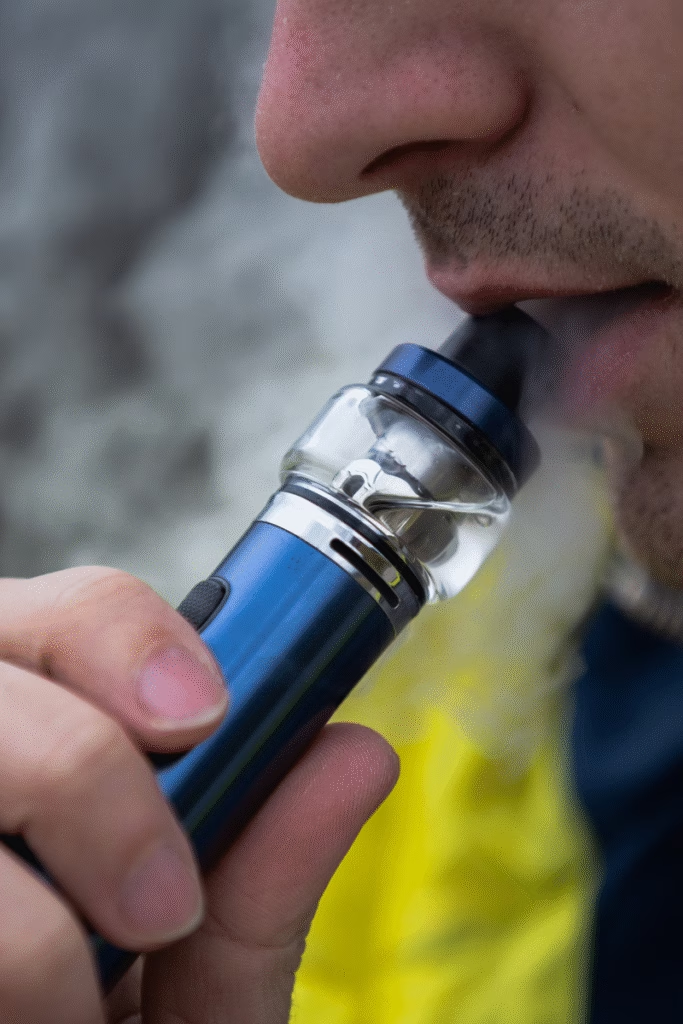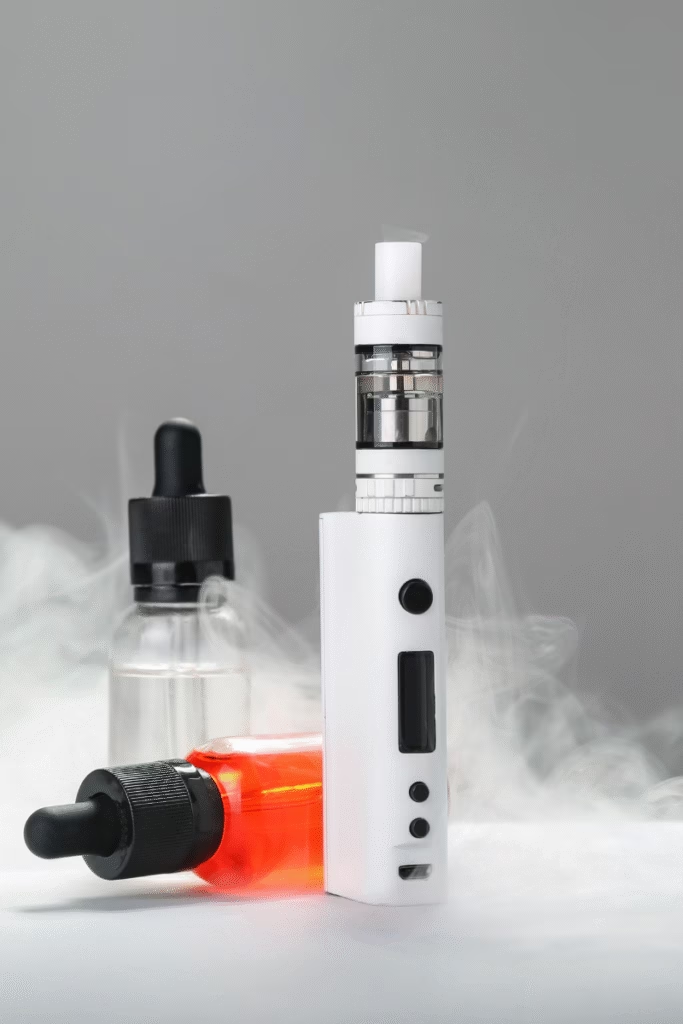Key Takeaways
- Vaping’s popularity is increasing across age groups, especially among teenagers and young adults.
- Sweeping claims about vape safety are frequently challenged by new research and ongoing studies.
- Many vape liquids contain complex mixtures of chemicals, and their long-term effects remain unknown.
- Unregulated and counterfeit vape products present significant health risks to users.
- Staying informed through reliable research and official guidance is essential for making safer health choices.
The Rise Of Vape Culture
The arrival of vaping has marked a significant cultural shift, especially over the past decade. No longer just an obscure hobby for tech enthusiasts, vaping has evolved into a multi-billion-dollar industry with visibility everywhere—social media, city streets, classrooms, even college dormitories. Brands release sleek new devices each year, designed for portability and discretion, while social influencers and celebrities often share their favorite flavors or devices online. This relentless visibility has normalized vaping in many circles, making it seem like a trendy and harmless activity.

Yet beneath this modern image, tough questions are being asked: Are e-cigarettes safe? It’s a question that’s more complicated than it appears. People of all ages are curious about the real risks behind the marketing hype, and public health authorities are grappling with an increasingly complex landscape. The ease of access, variety of enticing flavors, and sophisticated designs continue to draw in new users. Yet, the underlying safety claims are met with growing skepticism from both the scientific community and concerned parents.
What Is Really In A Vape?
Peeling back the shiny exterior of a vape pen or pod, you find more than just vapor. Most e-liquids start with a blend of propylene glycol and vegetable glycerin—substances generally considered safe in foods, cosmetics, and medicines. But the story doesn’t stop there. Vape juices can contain dozens, if not hundreds, of chemical flavorings, each contributing to the taste and aroma that users seek. Manufacturers also add nicotine, often at higher concentrations than in traditional tobacco products, to boost user satisfaction and encourage repeat business.

What many people don’t realize is that some devices or liquids labeled as “nicotine-free” have been found to contain nicotine in laboratory tests. Beyond that, when e-liquids are heated, some of the base chemicals and flavorings can transform into new compounds, some of which can be harmful when inhaled. The CDC reports that chemicals such as formaldehyde, acrolein, and diacetyl have been detected in the aerosols produced by certain vaping devices. Even small amounts of these chemicals can irritate the lungs and airways, but at higher or repeated exposures, more significant health issues may arise. Unfortunately, not all vape manufacturers are transparent about the contents, making it difficult to know exactly what users are inhaling with every puff.
Ongoing Debates On Vape Safety
People who vape and those considering vaping are caught in the middle of a heated debate. Some researchers argue vaping is less dangerous than traditional smoking and may even support current smokers in quitting. This idea of vaping as a “safer alternative” is prevalent in media narratives and advertising, and anecdotal stories often highlight dramatic health improvements after switching from cigarettes to vapes. However, an increasing number of experts believe this narrative can be misleading, especially for those who’ve never smoked. That’s because the comparison is stacked against one of the deadliest consumer products in history—combustible cigarettes—and not against actual safety.
Crucially, the full spectrum of health effects caused by vaping still isn’t known, especially among teens and young adults whose bodies and brains are still developing. Rigorous long-term studies are scarce, and rapidly changing device technology makes it increasingly difficult to keep pace with emerging risks. In a comprehensive article published by The New York Times, doctors and researchers called for a more robust investigation into the impacts of vaping, especially as alarming trends emerge in youth behavior. Both proponents and critics agree that there is not enough clear, long-term evidence to determine whether vaping harms are minimal or more severe than currently understood.
Research Insights On Vaping And Health
Several notable studies have started to shed light on vaping’s real-world health effects. Early on, researchers validated that e-cigarettes typically contain fewer of the cancer-causing chemicals found in cigarette smoke. But the absence of tar does not mean the absence of risk. The National Academies of Sciences, Engineering, and Medicine concluded that, while e-cigarettes are likely less harmful than traditional smoking, negative effects, especially for the lungs and cardiovascular system, remain a concern. Cases of EVALI (e-cigarette or vaping-associated lung injury) in 2019 brought this to dramatic attention, especially when hundreds of people, many of them young adults, were hospitalized with life-threatening lung damage.
Scientists have also found that ongoing exposure to e-cigarette vapor can alter immune responses in the lungs and increase susceptibility to bronchitis and asthma attacks. Nicotine, even delivered by vapor, still exerts strong effects on heart rate, blood pressure, and overall cardiovascular health. That means potential risks for strokes and heart disease can linger or even increase, especially in individuals with preexisting conditions. The truth is, with e-cigarettes only gaining popularity in the last decade, researchers haven’t yet had time to observe chronic effects over a lifetime.
Vaping’s Growing Appeal To Youth
The expansion of vaping among teens and young adults has raised red flags worldwide. Unlike cigarettes, which have long been stigmatized and subject to strict regulation, vape devices often come in bright, playful packaging and a dizzying range of flavors that strongly appeal to younger audiences. School officials and parents report seeing students discreetly vape between classes or even in classrooms due to minimal smoke and odor. According to surveys, more than one in ten U.S. high school students reported vaping in the past month—a number that has outpaced the rates seen among adults.
For many young people, curiosity and peer pressure are amplified by social media trends promoting vaping as fun, safe, and youthful. What is sometimes downplayed are the real risks: the developing adolescent brain is particularly sensitive to nicotine, which can interfere with critical pathways related to learning and memory. The CDC emphasizes that early exposure to nicotine also greatly increases the odds of later cigarette and other substance use. These patterns underscore the urgent need for more effective regulation and education tailored to young audiences.
The Risk Of Unregulated Vape Products
While the mainstream market has its own challenges, the murkiest dangers in vaping come from unregulated or counterfeit products. These items, sometimes sold at gas stations or through online vendors, often lack proper labeling and quality control. The EVALI crisis of 2019, for example, was traced to vitamin E acetate—a cutting agent found in illicit THC vaping products—and resulted in widespread hospitalizations. These incidents highlighted that in the absence of proper oversight, vaping can lead to acute, sometimes irreversible lung injury.
Even legal and regulated vaping products may contain hidden hazards, such as heavy metals leached from heating coils or poorly tested solvents. For buyers who select the cheapest or most widely available options, the lack of regulation creates hidden risks. Without concrete standards or effective enforcement, the onus falls on consumers to research trusted brands and avoid questionable sources. This can be challenging, and many users may unknowingly put themselves at risk by purchasing unvetted or counterfeit cartridges, pods, or refill fluids.
Weighing Harm Reduction Versus Long-Term Risk
Harm reduction is a central theme for many who defend vaping. For long-time cigarette smokers who switch to vapes and quit combustibles entirely, there can be measurable reductions in exposure to known carcinogens and toxins. Many health organizations cautiously recognize this benefit while issuing clear warnings: vaping is not safe for non-smokers, youth, or pregnant individuals.
The trouble is that, as vaping becomes normalized, increasing numbers of non-smokers, particularly teens, are drawn in, beginning a nicotine habit rather than replacing a smoking one. Health effects may take years to manifest, and possible links to chronic diseases are only starting to be understood through population studies. Most experts recommend a balanced approach: recognizing vaping’s potential as a smoking cessation aid for adults while actively discouraging its uptake among those who otherwise would not use nicotine products.
- Switching from cigarettes to vapes may result in less exposure to certain carcinogens and tobacco’s harmful byproducts.
- Youth and nonsmokers are especially at risk of unintended side effects, addiction, and long-term consequences.
- Ongoing studies are crucial for clarifying the overall health impact of e-cigarettes and informing public health guidelines.
Making Informed Choices About Vaping
The rise of vaping, fueled by culture, curiosity, and technology, necessitates informed health decisions. Potential users must consider current research and consult reliable sources, as marketing claims may be misleading. While e-cigarettes can be considered as smoking cessation options, it’s essential to seek guidance from healthcare providers. The safest approach remains to avoid nicotine products entirely. As research evolves, new health risks and regulations may emerge, underscoring the need for caution. Ultimately, individuals should stay informed, question product claims, and consult professionals, as the safety of e-cigarettes remains uncertain.
